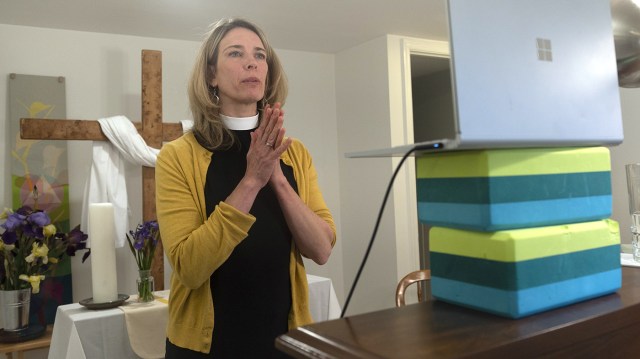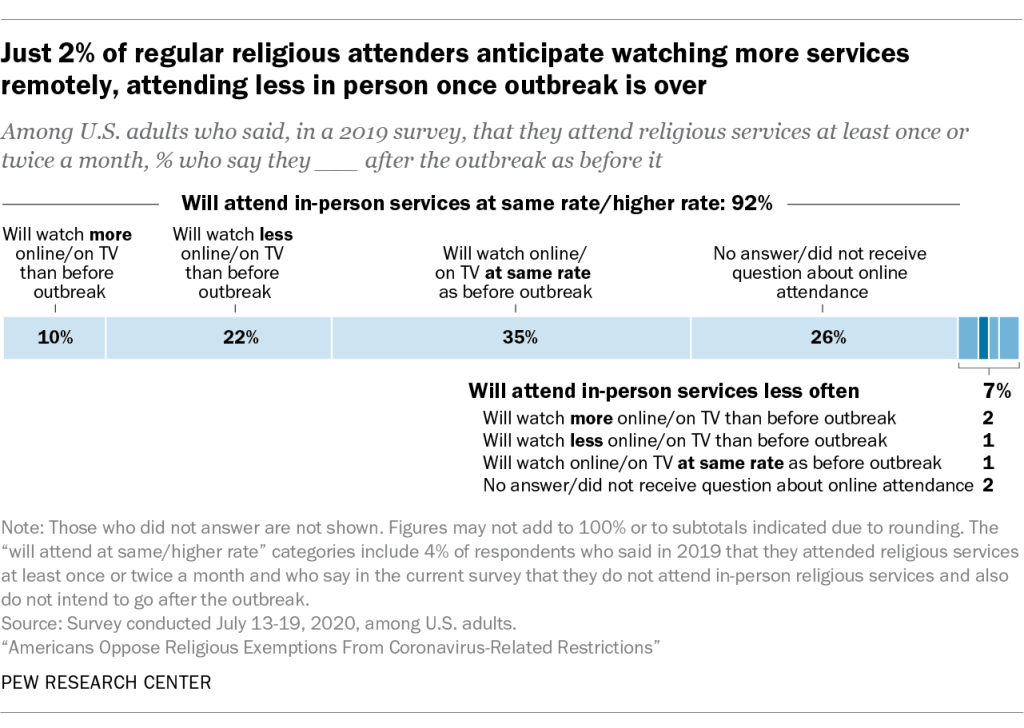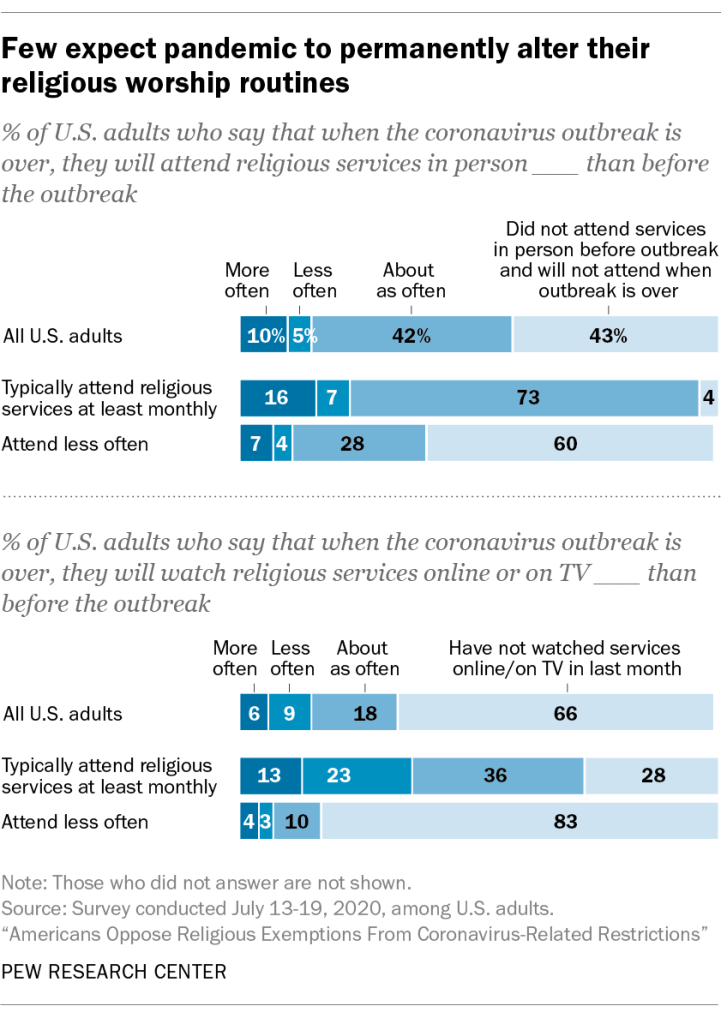
One-third of U.S. adults have watched religious services online or on television in the past month, and a little over half of them – or 18% of all adults – say they began doing this for the first time during the coronavirus pandemic. Of course, if you’re worshipping remotely, you can’t hug the other members of your congregation or shake hands with your minister, priest, rabbi or imam. But you can wear whatever clothes you want, turn up (or down) the volume, forget about traffic in the parking lot, and easily check out that service you’ve heard about in a congregation across town or even across the country.
Whatever the reasons, lots of people like virtual worship. Nine out of 10 Americans who have watched services online or on TV in the past month say they are either “very” satisfied (54%) or “somewhat” satisfied (37%) with the experience; just 8% say they are “not too” or “not at all” satisfied, according to a recent Pew Research Center survey conducted in mid-July.
So what does this bode for the future? By the time the COVID-19 pandemic has finally run its course, will Americans have lost the habit of going in person to a church, synagogue, temple or mosque? Some commentators have suggested that just as the pandemic has accelerated the trend toward shopping online and made Americans reliant on the internet for work, school, health and entertainment, so might many, if not all, varieties of religious experience move online in the 21st century.
But that’s not what the people who’ve been worshipping online see in their future. On the contrary, most U.S. adults overall say that when the pandemic is over, they expect to go back to attending religious services in person as often as they did before the coronavirus outbreak.
Pew Research Center conducted this survey to help understand how the coronavirus outbreak has impacted the worship habits of Americans. For this report, we surveyed 10,211 U.S. adults from July 13 to 19, 2020. All respondents to the survey are part of Pew Research Center’s American Trends Panel (ATP), an online survey panel that is recruited through national random sampling of residential addresses. This way nearly all U.S. adults have a chance of selection. The survey is weighted to be representative of the U.S. adult population by gender, race, ethnicity, partisan affiliation, education and other categories. For more, see the ATP’s methodology and the methodology for this report.
The questions used in this analysis can be found here.
To be sure, a substantial share of Americans (43%) say they didn’t attend religious services in person before the pandemic struck and they don’t plan to start going to a church or other house of worship when it’s all over. But 42% of U.S. adults say they plan to resume going to religious services about as often as they did before the outbreak, while 10% say they will go more often than they used to, and just 5% anticipate going less often.
Similarly, a lot of Americans are not interested in virtual services: Two-thirds of U.S. adults say they have not watched religious services online or on TV in the past month. But of the one-third of U.S. adults who recently watched services online or on TV, relatively few (19% of this group, or 6% of all adults) say that once the pandemic is over, they intend to watch religious services more often than they did before it started.
Most online worshippers say that after COVID-19 has passed, they plan to revert to their pre-pandemic habits (18% of all adults) or watch online less often than they did before the outbreak (9%).
The forecast is even more striking if one looks just at regular attenders from pre-COVID times – the respondents who told us in a 2019 survey that they went to services at least once or twice a month. Of those congregational stalwarts, 92% expect that when the pandemic is fully behind us, they will attend physical services at least as often as they did in the past. This includes 10% who say they will also watch online or on TV more than in the past.
Of course, it is impossible to predict how behavior will actually change after the pandemic, particularly if it extends further into the future than people expect. But, at the moment at least, very few U.S. adults anticipate substituting virtual participation for physical attendance at their church or other house of worship: Just 2% of the pre-pandemic regular attenders think that in the long run they will watch services online or on TV more often – and attend in person less often – than they used to.

Note: Here are the questions used in this analysis, along with responses, and its methodology.

